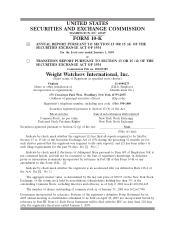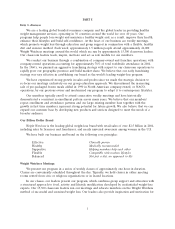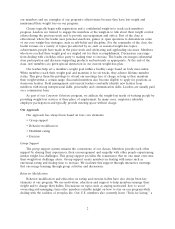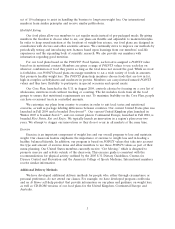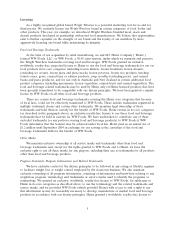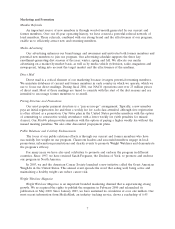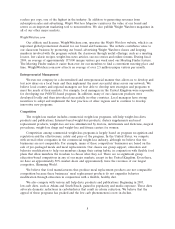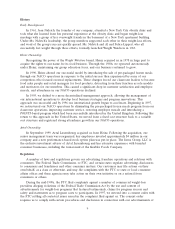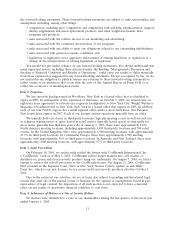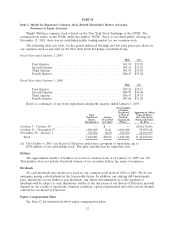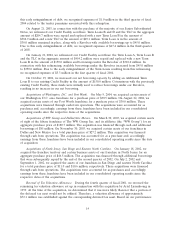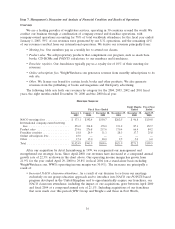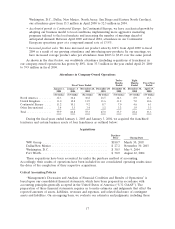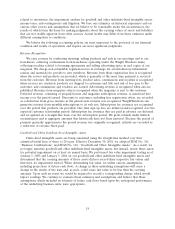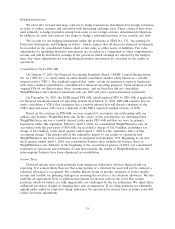WeightWatchers 2004 Annual Report Download - page 17
Download and view the complete annual report
Please find page 17 of the 2004 WeightWatchers annual report below. You can navigate through the pages in the report by either clicking on the pages listed below, or by using the keyword search tool below to find specific information within the annual report.History
Early Development
In 1961, Jean Nidetch, the founder of our company, attended a New York City obesity clinic and
took what she learned from her personal experience at the obesity clinic and began weight-loss
meetings with a group of her overweight friends in the basement of a New York apartment building.
Under Ms. Nidetch’s leadership, the group members supported each other in their weight-loss efforts,
and word of the group’s success quickly spread. Ms. Nidetch and Al and Felice Lippert, who all
successfully lost weight through these efforts, formally launched Weight Watchers in 1963.
Heinz Ownership
Recognizing the power of the Weight Watchers brand, Heinz acquired us in 1978 in large part to
acquire the rights to our name for its food business. Through the 1980s, we operated autonomously
under Heinz, maintaining our group education focus, and our business continued to grow.
In 1990, Heinz altered our successful model by introducing the sale of pre-packaged frozen meals
through our NACO operations in response to the initial success then experienced by some of our
competitors who focused on meal replacements. These changes forced our classroom leaders to become
food sales people and retail managers for food products, detracting from their function as role models
and motivators for our members. This caused a significant drop in customer satisfaction and employee
morale, and attendance in our NACO operations declined.
In 1995, we shifted to a more decentralized management approach, allowing the management of
our international operations to develop local business strategies and program innovations. This
approach was successful and by 1996 our international growth began to accelerate. Beginning in 1997,
we restructured our NACO operations by eliminating the pre-packaged frozen meals program from our
classroom operations, improving customer service, restoring employee morale and introducing a
POINTS-based program which had been successfully introduced in the United Kingdom. Following this
return to this approach in the United States, we moved from a fixed cost structure back to a variable
cost structure and registered strong attendance growth in our NACO operations.
Artal Ownership
In September 1999, Artal Luxembourg acquired us from Heinz. Following the acquisition, our
senior management team was reorganized, key employees invested approximately $4 million in our
company and a new performance-based stock option plan was put in place. The Invus Group, LLC is
the exclusive investment advisor of Artal Luxembourg and has extensive experience with branded
consumer businesses, including the turnaround of the Keebler Foods Company.
Regulation
A number of laws and regulations govern our advertising, franchise operations and relations with
consumers. The Federal Trade Commission, or FTC, and certain states regulate advertising, disclosures
to consumers and franchisees and other consumer matters. Our customers may file actions on their
own behalf, as a class or otherwise, and may file complaints with the FTC or state or local consumer
affairs offices and these agencies may take action on their own initiative or on a referral from
consumers or others.
During the mid-1990s, the FTC filed complaints against a number of commercial weight-loss
providers alleging violations of the Federal Trade Commission Act by the use and content of
advertisements for weight-loss programs that featured testimonials, claims for program success and
safety and statements as to program costs to participants. In 1997, we entered into a consent order with
the FTC settling all contested issues raised in the complaint filed against us. The consent order
requires us to comply with certain procedures and disclosures in connection with our advertisements of
9


